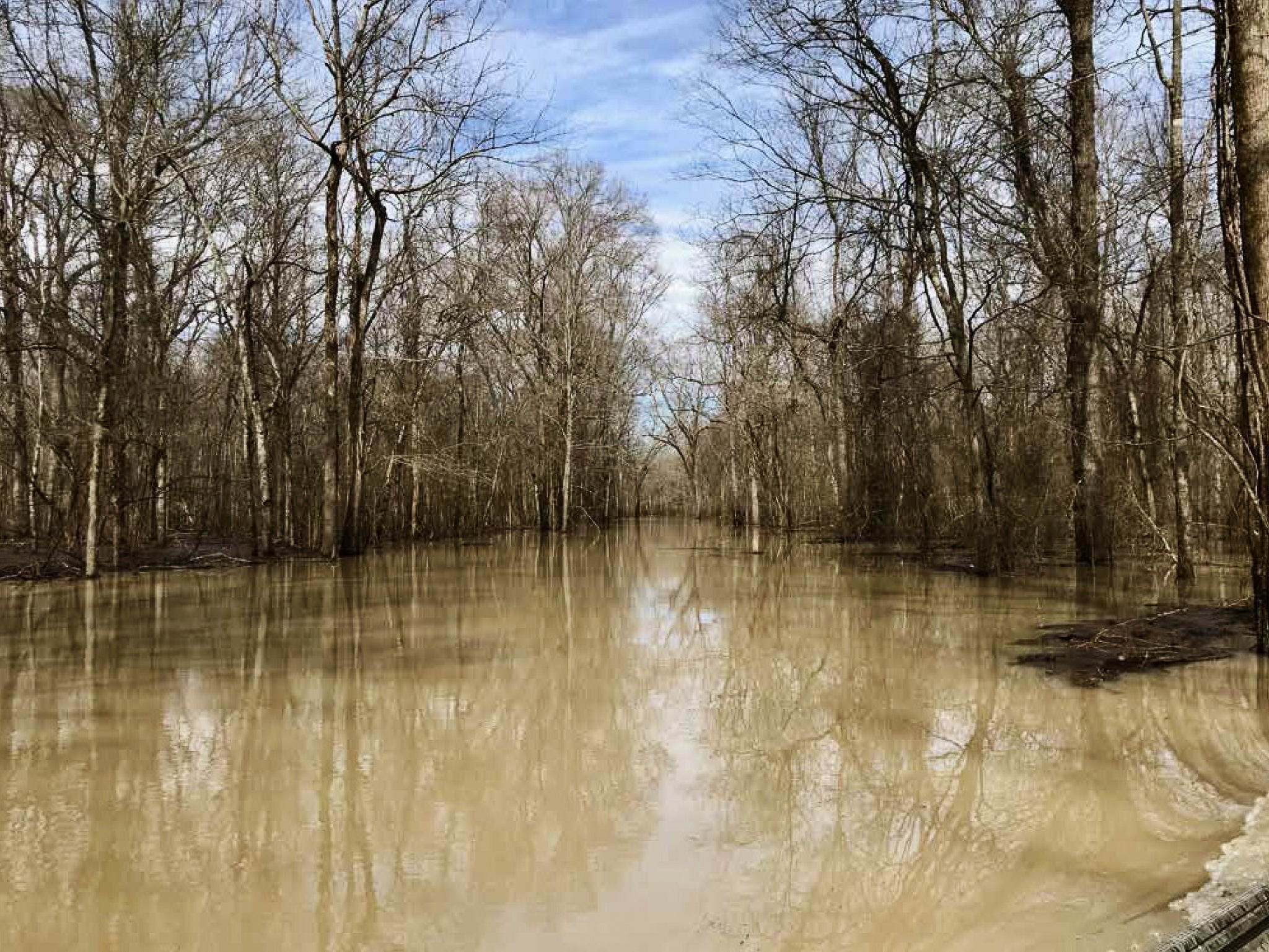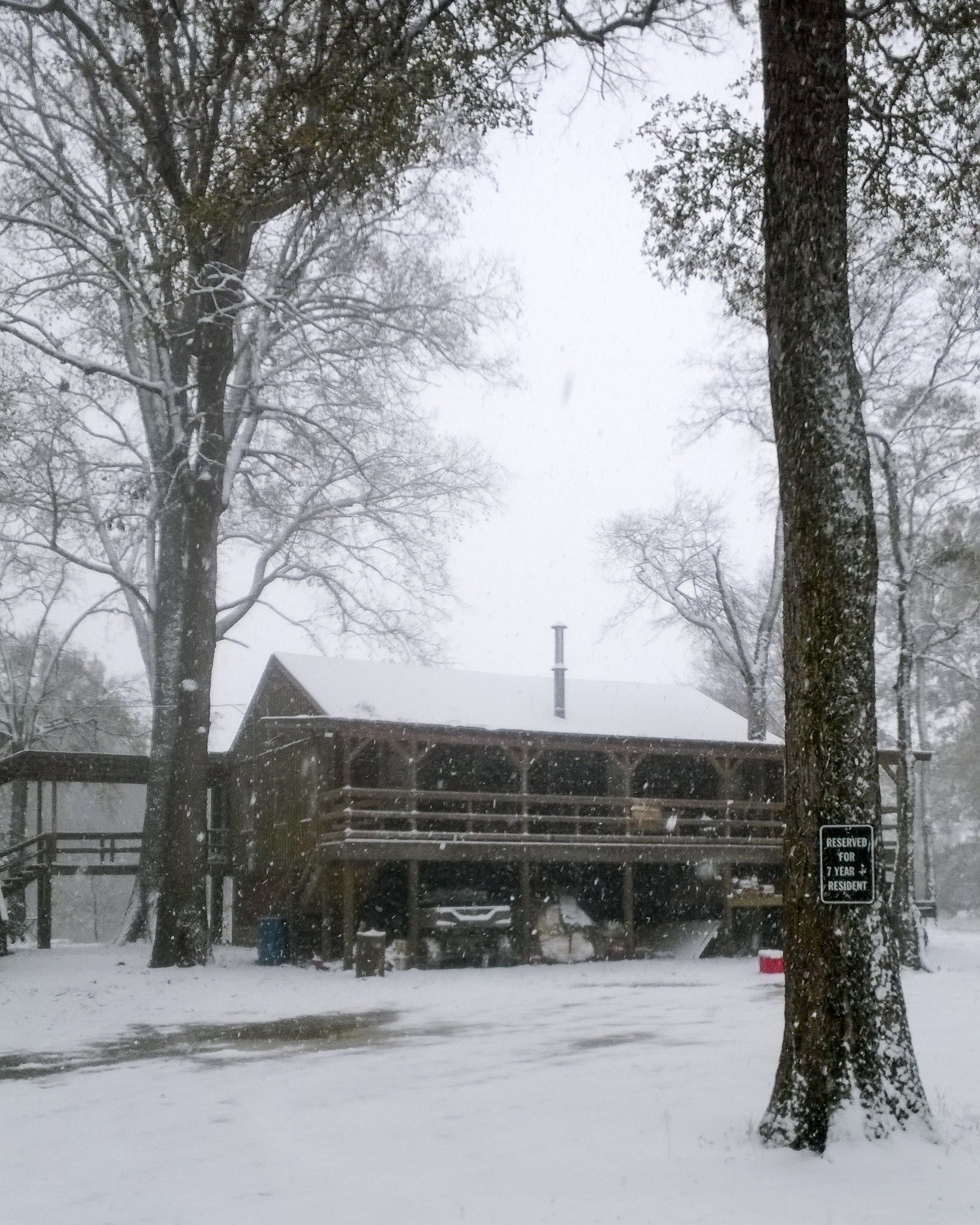The Land
An Earned Storied Reputation.
Since its humble beginnings nearly 40 years ago, Two Rivers Duck Club has earned a storied reputation as one of the most productive and consistent duck hunting properties in Arkansas, with green-timber hunting second to none. The club's harvest records boast annual harvest generally ranging between 2,000 and 3,500 birds each season, with several seasons recording over 4,500 club-wide. Several factors, including location and agressive management, contribute to Two Rivers Duck Club's ongoing success and consistent harvest numbers.
It's in the name
Between Two Rivers.
At the time of its establishment, the club primarily consisted of agricultural lands located between the Cache and White Rivers, just north of their confluence to the south, which is where the club's name was derived. Today, members of Two Rivers Duck Club enjoy hunting on the club's several thousand contiguos acres of mature bottomland hardwood timber, WRP lands planted in hardwoods & native grass, moist-soil impoundments, oxbows, old river chutes, tupelo-cypress brakes and sloughs, uniquely located in the heart of the "The Big Woods" of Arkansas, at the covergence of the Cache River, White River and Bayou DeView flyways.
Continuously Improving
Land Development & Management.
In addition to the club's prime location at the conjucture of three of Arkansas's five major flyways, constant land management & development activities over the last 40 years have transformed the club into a waterfowl mecca. Notwithstanding its proven track record, the club remains devoted to continuously improving the property's waterfowl habitat. Each year, management plans are revised and implemented to maintain premier Arkansas green timber hunting. Land development & management projects range from additions and improvements to water-control/drainage structures, levees, interior roads and boat lanes; timber mulching in and around timber holes, additions of new blinds & pits, and annually planting approximately 500 acres of corn, millet, milo and rice food plots that are left unharvested for migrating waterfowl.
Numerous Hunting Areas
Blinds, Pits, Timber Holes and Much more.
Two Rivers Duck Club and its hunting areas include numerous holes and blinds located within a vast stretch of private, bottomland hardwood timber along the Cache River, which can be artificially flooded via groundwater wells and relifts stationed on the banks of the Cache River, in addition to over 20 pits, elevated blinds and floating blinds strategically positioned throughout the Club. A large portion of the moist-soil units and waterfowl food plots are devoted to use as waterfowl rest areas with no hunting on these areas permitted. In addition, since 1998 the club has maintained a strict policy prohibiting afternoon hunting to allow the birds ample resting time and ensure the quality of the hunting remains constant throughtout the season.
Protected & Managed Grounds
Federal & State Wildlife Refuges.
The club's headquarters is located near the small community of Brasfield, between DeValls Bluff and Brinkley, Arkansas. Also located within close proximity of the club are several thousands of acres of federal and state refuges. The Cache River National Wildlife Refuge adjoins the club's east boundary, and the Sheffield Nelson Dagmar Wildlife Management Area, which includes the 500+ acre Apple Lake Waterfowl Rest Area, adjoins the club to the north and east. The White River National Wildlife Refuge is also located less than a mile south of the club. In addition to over 13+ miles of Cache River frontage, Cross Pond and Robe Bayous traverse the club's property, and Bayou DeView parallels the club less than half a mile to the east. Also located to the south and east of the club are several thousand acres of private lands that have been restored for waterfowl through public-private partnerships and federal conservations programs. These surrounding areas, along with Two Rivers Duck Club, are considered the most important wintering grounds for waterfowl in North America. According to the U.S. Fish & Wildlife Service, Two Rivers and the surrounding areas are used as the primary wintering grounds for approximately 50% of all mallards migrating through the Mississippi Flyway.

The Cache River National Wildlife Refuge
The Cache River National Wildlife Refuge (NWR) currently encompasses over 72,000 acres in multiple non-contiguos tracts across east central Arkansas. The Cache River basin contains some of the most intact and least disturbed bottomland hardwood forests in the Mississippi Valley region. Waterfowl species on the refuge include Mallards, Northern Pintails, Green-Winged Teal, White-Fronted Geese, and much more.

The Sheffield Nelson Dagmar WMA
Approximately 9,805 acres in Monroe County, Arkansas, the Dagmar WMA is managed by the Arkansas Game & Fish commision and is a wetland of international importance. The WMA contains old growth Tupelo-Cypress swamps with many of the large cypress being 450 to 1200 years old. In addition to holding wintering waterfowl, the area supports white-tailed deer, black bears, wild turkey, alligators, and wintering bald eagles. The area is also known for excellent fishing with crappie, bass, bream, and catfish throughout the WMA.

The Mississippi Flyway
The Mississippi Flyway is a bird migration route that generally follows the Mississippi, Missouri, and Lower Ohio Rivers with the endpoints of the flyway around central Canada and the Gulf of Mexico region. The route narrows considerably in the Mississippi Alluvial Valley which accounts for the hundreds of bird species that make the round-trip through the surrounding area.
























